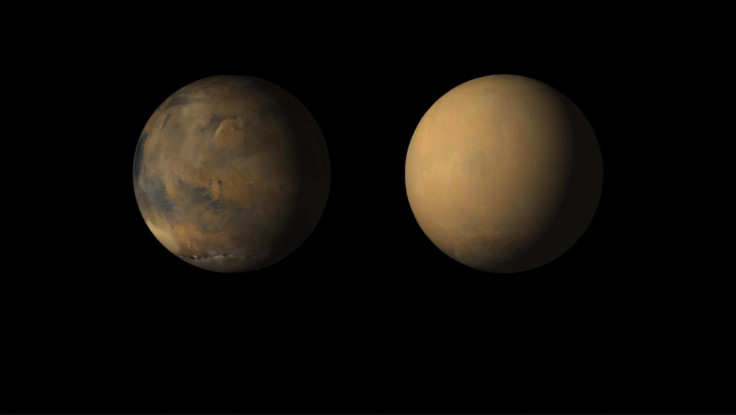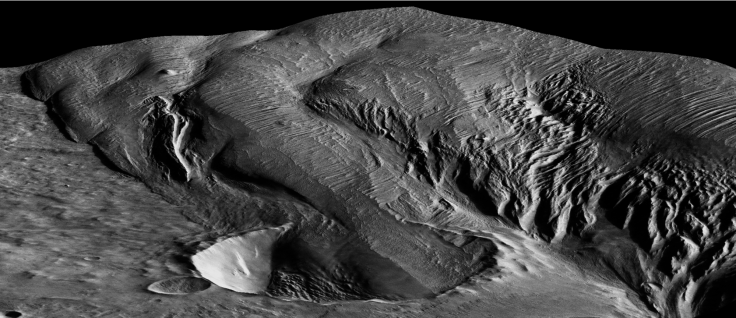One Huge Formation On Mars Causes Most Of Martian Surface Dust

Mars witnesses dust storms from time to time and are currently battling one that encircles the entire red planet and has sent one of NASA’s operations rovers into a deep sleep. There is no saying when the humongous sunlight-blocking event will settle down, but thanks to a team of researchers from John Hopkins University (JHU), Baltimore, we finally know where all this dust is coming from.
The answer, as the researchers described, is Medusae Fossae — a massive, easily-eroded deposit of soft-rock that runs along the equator of the red planet and has been giving away huge swathes of dust throughout most part of its lifetime.

First discovered by NASA’s Mariner spacecraft nearly half a century ago, Medusae Fossae covers a 600-mile long region or approximately 20 percent of the continental United States in terms of size. It is the largest known formation of its kind in the solar system.
The geological unit appears as a smooth and gently undulating surface in general but is also partially wind-sculpted into ridges and grooves. Scientists studying the history of this feature posited it originated from volcanic ash and rocks spewing into the sky billions of years ago and has been eroding ever since.
Scientists have long known about this formation, but the effect of its erosion wasn’t revealed until the team of researchers at JHU started looking for the origin of dust on Mars.
On Earth, forces of nature like wind, water, glaciers, volcanic eruptions, and meteorite impacts are believed to be the reason behind the separation of dust from soft-rocks, but the case of Mars was mysterious as none of the features are active on the planet, not at a scale to produce this much dust.
“How does Mars make so much dust, because none of these processes are active on Mars?” Lujendra Ojha, the lead author of the study, said in a statement.
According to the team, streams of water and volcanic eruptions prevailing in the past would have made a small contribution into the reservoir of dust, while meteorite impacts would have resulted in much bigger fragments than those making up the dust
So, the group decided to analyze the chemical makeup of the dust seen all over the planet. Previous data collected from rovers and landers sitting in different regions of the planet revealed very similar dust characteristics.
“Dust everywhere on the planet is enriched in sulfur and chlorine and it has this very distinct sulfur-to-chlorine ratio,” Ojha added.
The group compared those findings with dust information collected by NASA’s Mars Odyssey spacecraft and found Medusae Fossae formation also carries an abundance of sulfur and chlorine and that too in the same ratio.
On the basis of this, as well as the wind-sculpted ridges in the formation, they concluded over billions of years of Martian history, the geological unit has eroded, adding more and more fine particles into the thick layer covering the planet. The particles in the atmosphere then block solar radiation and create temperature invariability, which drives high-speed winds resulting in occasional planet-covering dust-storms.
“Mars wouldn’t be nearly this dusty if it wasn’t for this one enormous deposit that is gradually eroding over time and polluting the planet, essentially,” co-author Kevin Lewis concluded.
The study titled, "The Medusae Fossae Formation as the single largest source of dust on Mars," was published July 20 in the journal Nature Communications.
© Copyright IBTimes 2024. All rights reserved.





















